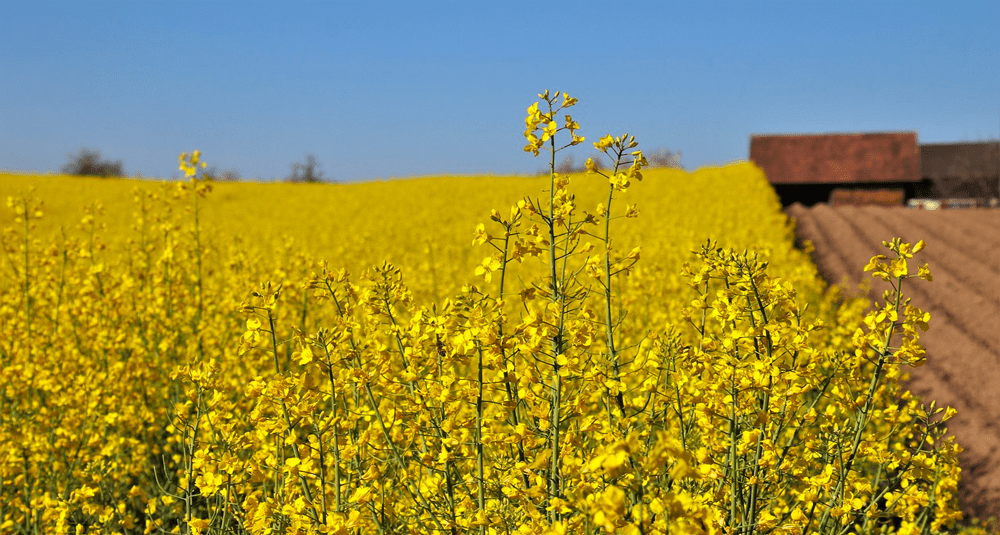What cross-breed does rapeseed come from?
Last Updated:
Rapeseed (Brassica napus) is a plant resulting from a natural cross between cabbage (Brassica oleracea) and turnip rape (Brassica rapa). Both plants belong to the Brassicaceae family, known for its many species cultivated for food, feed and oil production.
Rapeseed is the result of spontaneous cross-breeding between cabbage and turnip. This crossing took place in regions where these two plants were grown in close proximity to each other, enabling natural hybridization.
Over time, farmers selected rapeseed varieties with the best characteristics, such as high oil content and disease resistance. Today, rapeseed is grown in many parts of the world, including Europe, Canada and China.
Rapeseed is an annual or biennial plant that can reach heights of 1 to 2 meters. It has large, lobed leaves and sturdy stems. Its bright yellow flowers are grouped in clusters and attract many pollinators.
Rapeseed is generally sown in autumn (winter rapeseed) or spring (spring rapeseed). After a period of vegetative growth, it flowers in spring and the seeds ripen in summer.
Rapeseed’s main use is oil production. Rapeseed oil is valued for its balanced fatty acid composition, containing omega-3 and omega-6 in particular. It is used in cooking, for margarine production and in the food industry.
Rapeseed is also an important source of biofuels. The oil extracted from the seeds can be transformed into biodiesel, a renewable alternative to fossil fuels.
Rapeseed meal, the residue from oil extraction, is rich in protein and is used as animal feed.
Rape crop residues are often used as green manures, improving soil structure and fertility.
Rapeseed plays an important role in crop rotation. It helps break the disease and pest cycles associated with other crops, and contributes to improving soil structure.
Rapeseed flowers attract many pollinators, such as bees, thus contributing to the biodiversity and health of agricultural ecosystems.
Growing rapeseed has its advantages for the environment, but it also poses challenges. Water demand, fertilizer requirements and phytosanitary treatments can all have an ecological impact. Sustainable farming practices and the selection of varieties resistant to disease and climatic conditions are essential to minimize these impacts.
Agronomic research is focused on developing rapeseed varieties that are more resistant to disease, pests and extreme weather conditions. Advances in varietal selection are helping to improve yields and oil quality.
Biotechnological techniques are also being used to introduce beneficial characteristics into rapeseed plants. For example, genetically modified varieties have been developed to resist herbicides and insects.
Rapeseed is a plant resulting from a natural cross between cabbage (Brassica oleracea) and turnip rape (Brassica rapa). This cross has given rise to a versatile crop with multiple uses, ranging from the production of edible oil and biofuels to animal feed and soil improvement. Rapeseed plays a crucial role in modern farming systems, while posing challenges and opportunities for sustainable, environmentally-friendly agriculture.
You may also be interested in
nature

What cross-breed does rapeseed come from?
Answer
Rapeseed is a natural cross between cabbage and turnip. These two plants from the Brassicaceae family have given rise to this versatile crop.